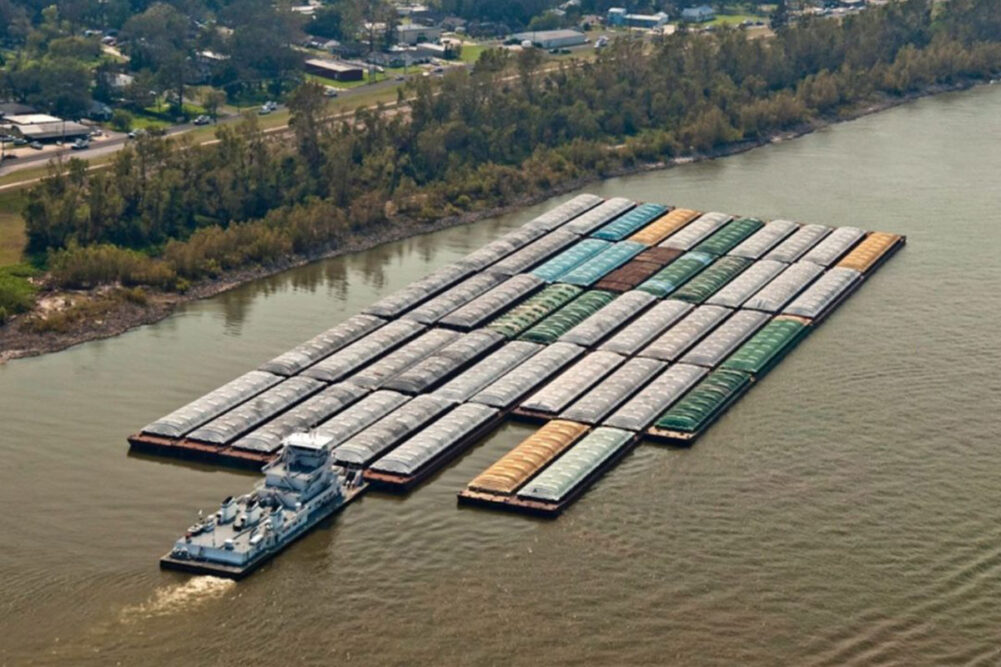KANSAS CITY, MO. — Grain and oilseed markets have seemingly faced myriad woes over the past couple of years including COVID-19, war in Ukraine, floods, heat waves and droughts. Ocean, rail and truck logistics have been one of the greatest challenges, and now low water levels on the Mississippi River system are tightening barge traffic and sending barge freight rates to record highs just as freight demand is about to increase as the corn and soybean harvests gain momentum.
The developing barge dilemma was brought to the forefront this week when Ingram Barge Co., the largest US barge operator, declared force majeure in a letter to customers, saying “near-historic” low water levels on the Mississippi River meant it couldn’t fulfill deliveries.
Bloomberg indicated a “logjam” of more than 100 vessels on the Mississippi River. The US Coast Guard was responding to at least two vessel groundings, one at Stack Island, La., where 122 vessels were in queue and another near Memphis, Tenn., where 15 vessels were queued up.
River water levels typically are lowest around this time of year, but this year drought conditions in parts of the Midwest have dropped levels even lower, shrinking channels and reducing draft levels. About 60% of all US grain exports move down the Mississippi River to ports in Louisiana, while fertilizer, metals, crude oil and other products move upriver.
The most critical low-water section currently appears to be near Cairo, Ill., but the lack of rain in forecasts means the low water mark will shift southward in the coming days and weeks.
The US Department of Agriculture said barge freight rates at St. Louis reached a record high in the week ended Sept. 27 at 1,250% of tariff and up 58% from a year earlier.
Some Gulf exporters pulled offers for corn and soybeans loading at Louisiana ports in October and November as they were unsure if adequate grain supplies could reach export terminals.
It's a critical period especially for soybeans as US exports typically are in highest demand during harvest when prices tend to be lowest, and when Brazilian supplies are tight with new crop harvest a few months away.
Read more about supply chain topics affecting the industry on our Operations page.





